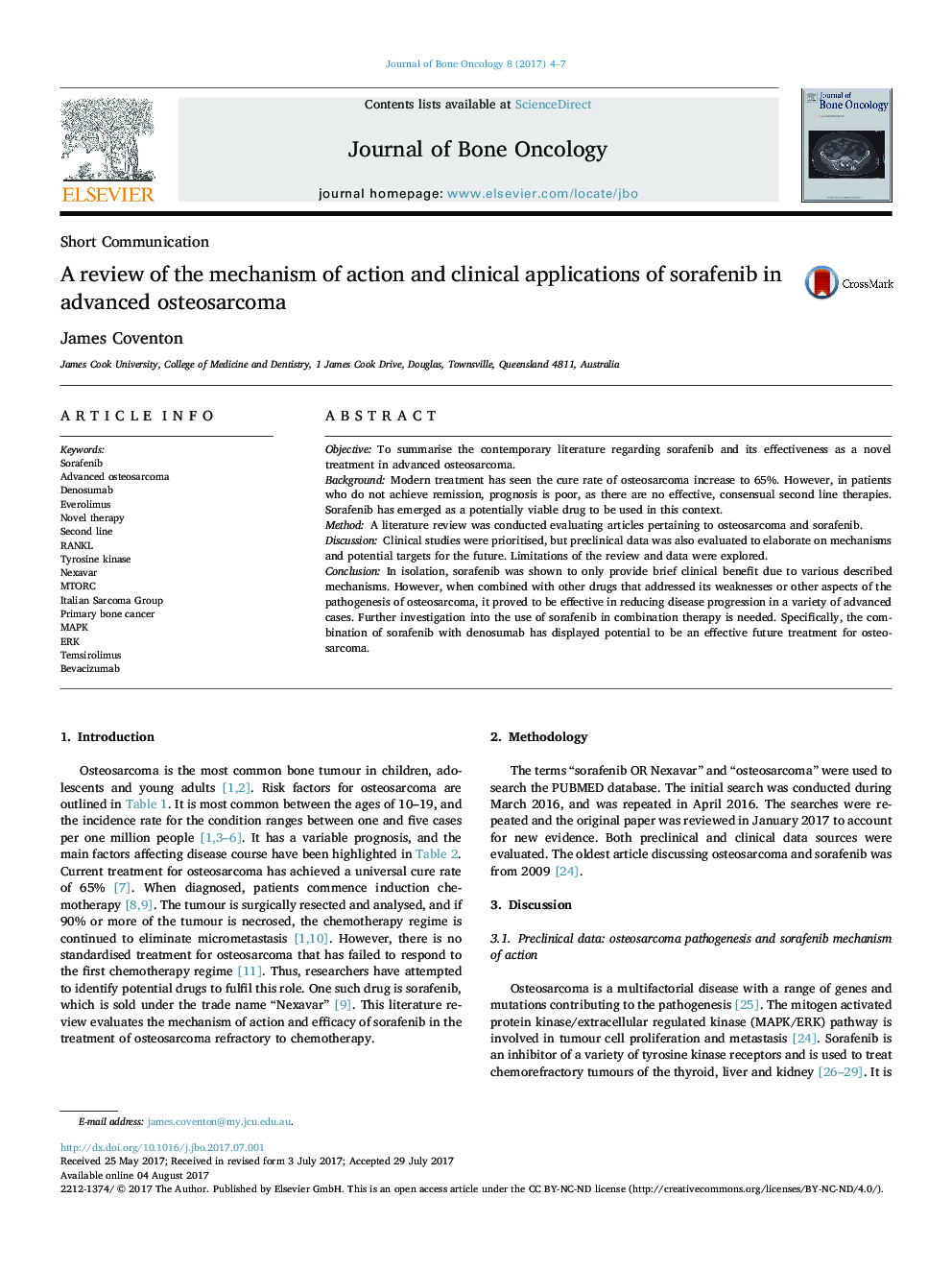| Article ID | Journal | Published Year | Pages | File Type |
|---|---|---|---|---|
| 5527639 | Journal of Bone Oncology | 2017 | 4 Pages |
ObjectiveTo summarise the contemporary literature regarding sorafenib and its effectiveness as a novel treatment in advanced osteosarcoma.BackgroundModern treatment has seen the cure rate of osteosarcoma increase to 65%. However, in patients who do not achieve remission, prognosis is poor, as there are no effective, consensual second line therapies. Sorafenib has emerged as a potentially viable drug to be used in this context.MethodA literature review was conducted evaluating articles pertaining to osteosarcoma and sorafenib.DiscussionClinical studies were prioritised, but preclinical data was also evaluated to elaborate on mechanisms and potential targets for the future. Limitations of the review and data were explored.ConclusionIn isolation, sorafenib was shown to only provide brief clinical benefit due to various described mechanisms. However, when combined with other drugs that addressed its weaknesses or other aspects of the pathogenesis of osteosarcoma, it proved to be effective in reducing disease progression in a variety of advanced cases. Further investigation into the use of sorafenib in combination therapy is needed. Specifically, the combination of sorafenib with denosumab has displayed potential to be an effective future treatment for osteosarcoma.
